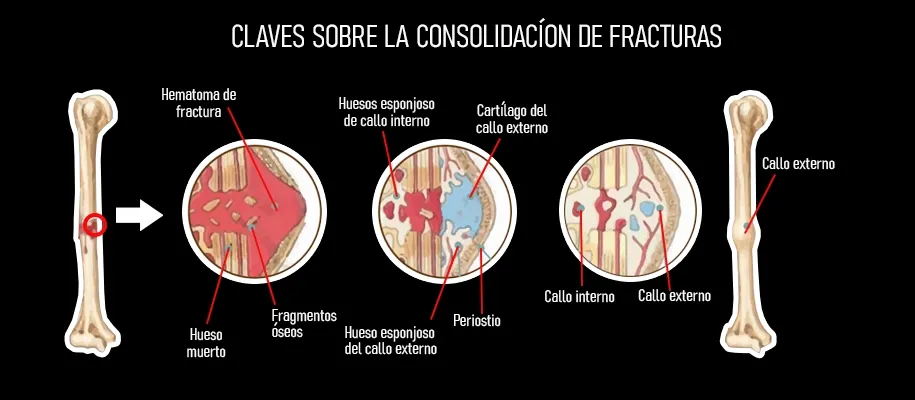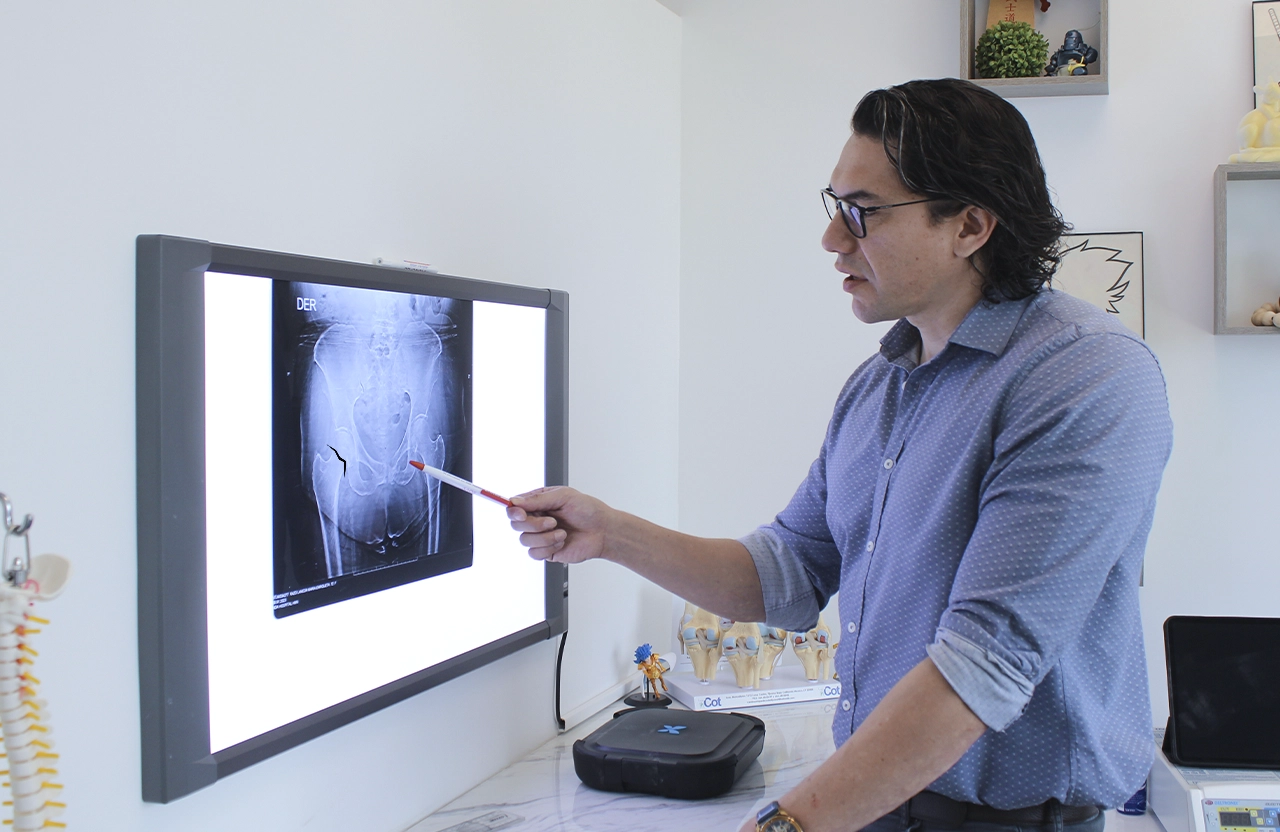What do a hip fracture, tibia and fibula have in common?
Although they occur in different areas of the body, they all go through the same healing path. As a trauma specialist in Tijuana, I've had the privilege of accompanying my patients along this journey. Today I want to explain not only the recovery phases, but how to identify which stage you're in, what signs indicate everything is going well, and when you should act on a possible complication.
What is bone consolidation?
It's the biological process by which bone repairs itself after a fracture. It consists of 4 interconnected stages where cells, minerals and tissues work together to rebuild the bone structure. Understanding these phases allows you to have realistic expectations and set goals during your healing process.
Phase 1: Inflammatory (0-7 days)
This phase begins immediately after the fracture. Inflammation is a universal response to tissue damage, whether from direct trauma or after surgery. It's normal and part of the healing process.
Why does it happen?
Imagine there's an earthquake and an alarm sounds: The same thing happens in your body to alert. When the bone fractures, bleeding occurs in the area. This activates the arrival of immune cells that release substances to attract more cells, increase blood flow and allow fluid entry, which generates inflammation. In turn, a clot forms creating a kind of scaffold that provides stability to start the new bone.
During this phase it's normal to feel intense pain, pulsations, localized heat and sensitivity to movement. Don't worry, this phase is normal, it may be uncomfortable, but it's the foundation of the process.
Phase 2: Soft Callus Formation (week 2-6)
In this phase, mesenchymal stem cells migrate to the fracture site where they divide into chondroblasts that begin to weave a cartilage network and fibroblasts that secrete collagen and proteins that form a spongy tissue.
At first this new tissue doesn't contain calcium so it's a soft tissue that requires much attention and care as it can be easily damaged. On x-rays it can be seen as a cloud around the fracture.
It's recommended to maintain proper immobilization and relative rest, as the bone is stabilizing and isn't yet strong enough to support full weight.
Phase 3: Hard Callus Formation (week 6-12)
During this stage, the soft callus mineralizes and hardens, and osteoblasts which are bone-building cells deposit minerals like calcium and phosphate in the soft callus to harden it. This forms a hard callus of bone making it more stable.
During this process there's a notable decrease in pain, a greater sense of firmness. During this phase controlled partial weight bearing begins.
Phase 4: Bone Remodeling (months up to 2 years)
The final stage of bone consolidation. Although the bone is already functional, it continues remodeling to recover its original structure.
Osteoclasts will reabsorb excess bone tissue, like a stone sculpture where excess is removed and details are polished, while osteoblasts continue forming new bone, which replaces the soft callus.

Why might your fracture take longer to heal? Factors
There are several factors that can influence consolidation time:
- Fracture type: Complex or comminuted fractures take longer to heal.
- Age: Between 30 and 50 years, consolidation is slower. With age, bone density decreases.
- Smoking: Reduces blood flow by up to 40%, which affects cellular nutrition.
- Diabetes: Makes collagen production difficult and alters bone cell function.
- Anemia: Limits oxygen transport needed for repair.
- Osteoporosis: Affects bone mineralization.
- Poor nutrition: A malnourished body lacks the basic elements for bone regeneration.
Diabetic smoker patients may take up to 70% longer to consolidate a fracture. Also, certain medications (like corticosteroids) can also interfere in the process.
What if the bone doesn't heal correctly?
When there's a delay in consolidation, it may be necessary to stimulate the area with:
- Therapeutic ultrasound
- Platelet-rich plasma (PRP)
- Nutritional correction
If pseudoarthrosis develops, surgical intervention with grafts or fixators is required.

Is my body going through the phases correctly? Signs the bone is healing properly:
How to know if you're healing well?
As your trauma specialist, I'll monitor the process with imaging studies and periodic check-ups. Some positive signs you may notice in your process are:
- The pain gradually decreases, as does the swelling.
- You may have greater mobility and stability or strength when bearing weight.
Warning signs:
- Pain that reappears or increases without reason
- Persistent swelling with redness or heat (could be infection)
- Loss of sensitivity or changes in coloration (bluish, pale)
- Abnormal mobility in the fractured area

Tips to optimize bone consolidation
Follow a diet focused on high-quality proteins like chicken, lean meat and especially blue fish like salmon. These provide omega-3 fatty acids and vitamin D, fundamental for bone health and the consolidation process.
Vitamin K supplementation: Essential for coagulation and osteocalcin maturation, an important protein for bone mineralization.
Increase your vitamin C intake: Essential for collagen generation, you can find it in oranges, tangerines, lemons and tomatoes.
Make sure to consume calcium: Include dairy products, nuts and seeds in your diet.
Avoid: Smoking and consuming refined sugars as they alter the calcium and phosphorus balance, affecting your bone healing.
Prioritize sleep: Sleep 7 to 8 hours daily, this allows the body greater cellular regeneration.
Stay in relative motion: Guided and safe physical activity is key to recovering mobility and strengthening tissues during rehabilitation.
Recovering from a fracture isn't just about waiting or stopping your life, it's about continuing movement, understanding your body's signals and adapting a new routine to integrate each phase and work as a team with your trauma specialist, physiotherapist. Each phase is an opportunity to heal and recover your independence, that's for sure with patience.
If you've fractured yourself and have doubts about your process or suspect your fracture isn't progressing well, I invite you to my office in Torre Norte 2 in Tijuana to support you with a diagnosis and imaging tests to monitor and work together on a personalized treatment plan.
No hay comentarios para este blog.
